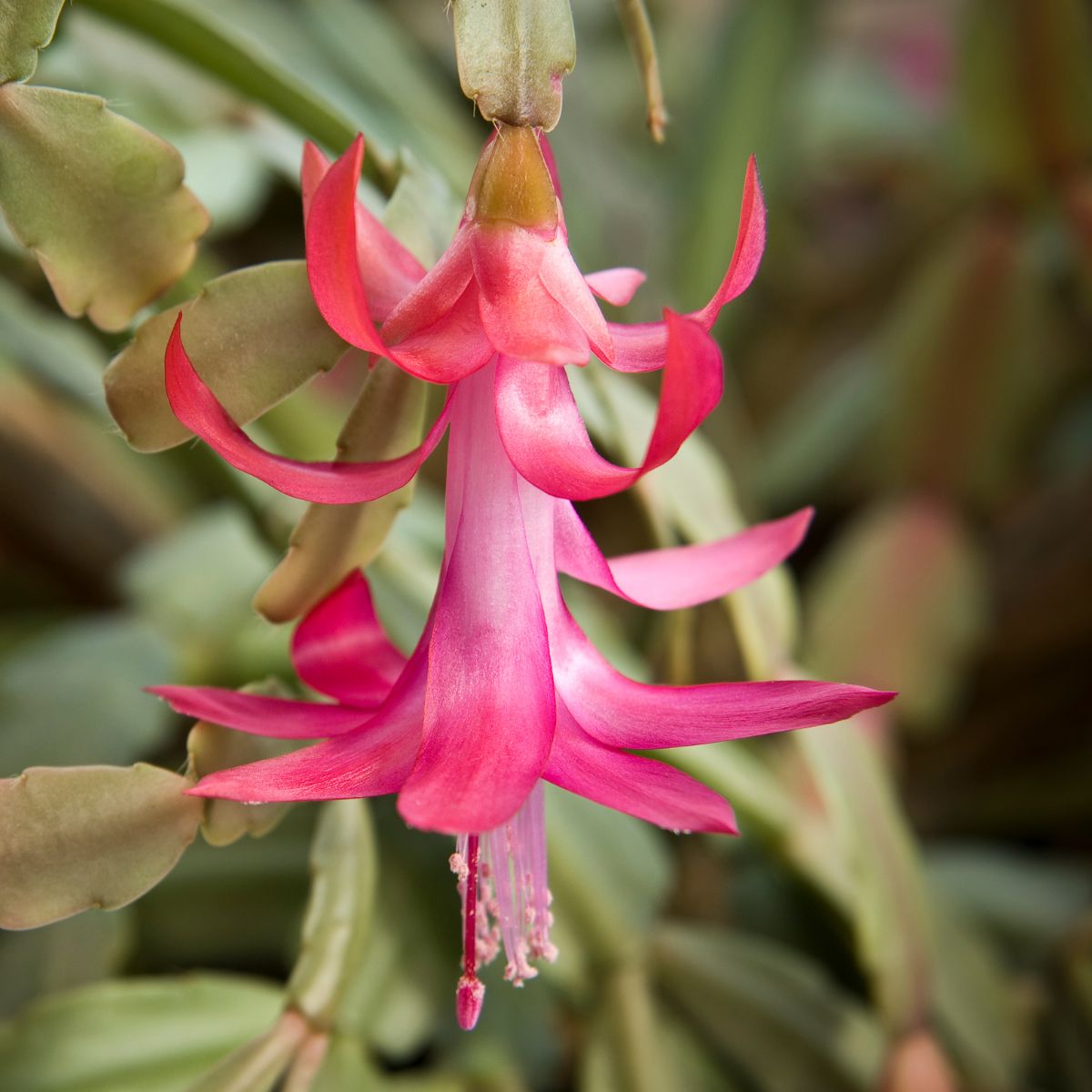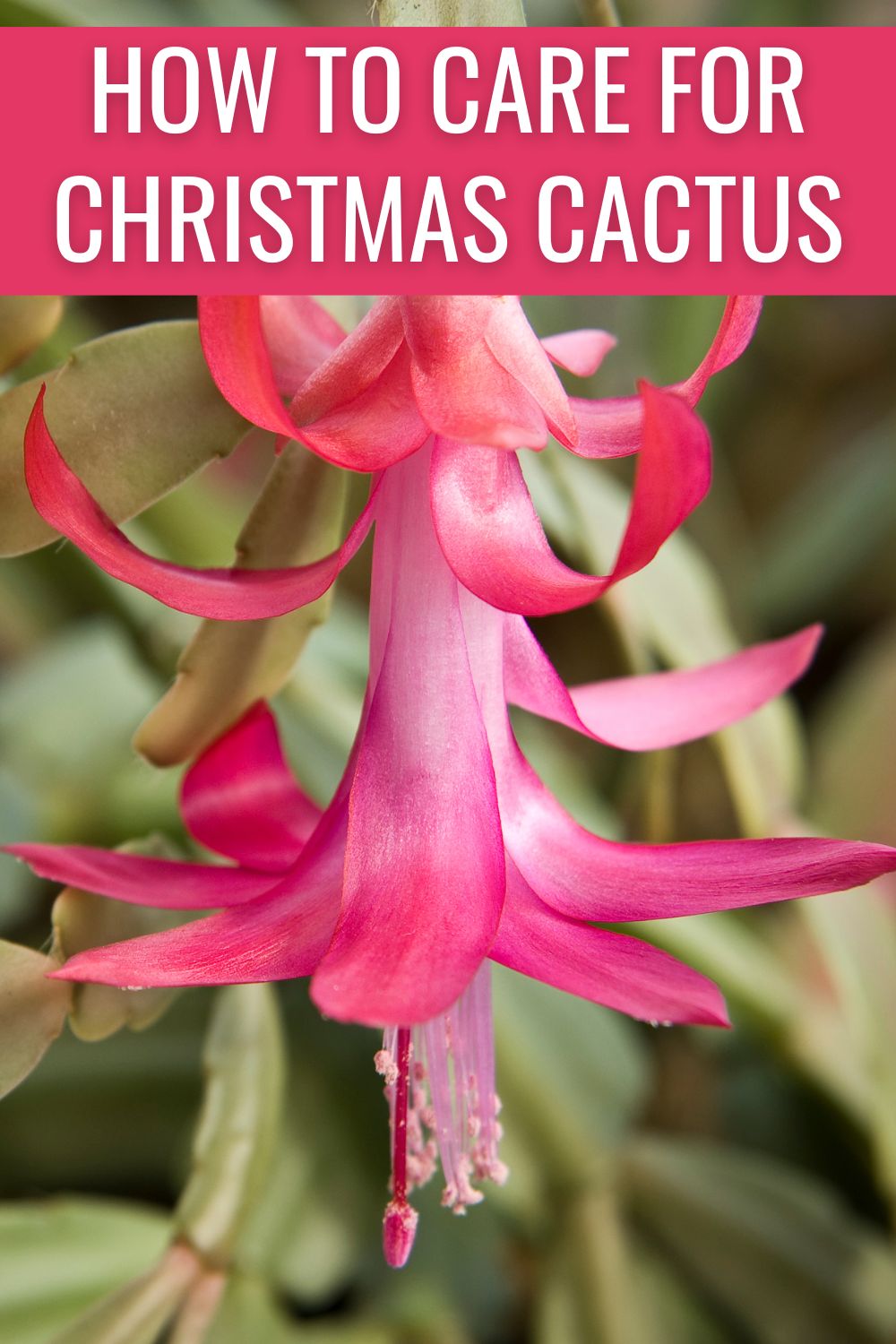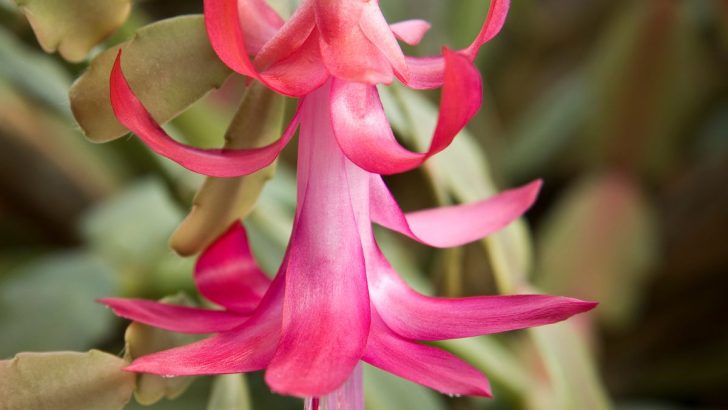When I was in college, a friend mentioned a Christmas cactus, and I laughed, thinking it was a joke. I’d never heard of such a thing! Naturally, I received one for Christmas that year, and I was immediately entranced by its unique segmented branches and bright, festive flowers.
Since then, I’ve learned that Christmas cactus care requires minimal effort, and propagating these holiday houseplants is easy, making them perfect for gift giving.

Christmas Cactus Care
Christmas cacti (Schlumbergera bridgesii or S. x buckleyi) are tropical plants native to Brazil, though they thrive in the average home environment: temperatures of around 60 to 70 F, with 50 to 60 percent humidity. If the air in your home tends to be dry, place a tray of pebbles under the plant and fill it with water (don’t let the plant itself sit in the water, though!).
Although Christmas cacti will tolerate low light, they produce more blooms when placed in bright, indirect light. Avoid direct light, which can turn the leaves red, make them limp, or even burn them.
Because a Christmas cactus is a tropical rather than desert plant, it requires regular watering. Whenever the top inch of soil feels dry, water thoroughly, taking care to dump out any excess liquid sitting in the saucer.
How to make a Christmas cactus bloom
While Christmas cacti have interesting branches, we especially delight in the flowers that bloom once yearly, and some plants need a little encouragement. Long nights and cooler temperatures signal to the Christmas cactus that it’s time to bloom.
Make sure your Christmas cactus receives 12 to 14 hours of uninterrupted darkness each night, starting around mid-October. If this doesn’t happen naturally, place the plant in a closet or cover it with a box every night for six to eight weeks or until buds form. Alternatively, keep the plant in a cool location of about 50 to 55 F beginning by early November.
It’s not imperative to do so, but you can also feed the Christmas cactus during the active growing season to aid in bud formation. Apply a blooming houseplant fertilizer according to the instructions on the label from mid-spring through early fall.
Re-potting a Christmas cactus
Your Christmas cactus will likely need re-potting about once every two or three years. Signs that it needs a new pot include drying out or wilting frequently despite proper, regular watering. Never re-pot while the plant is blooming; the best time is right after the flowers wilt, in late winter or early spring.
Choose a container slightly larger than the current one with drainage holes. Add well-draining soil, such as a commercial succulent potting mix. Alternatively, mix one-half to two-thirds general potting soil with one-third to one-half sand or vermiculite.
Trimming a Christmas cactus
Right after blooming, ideally about a month after the blossoms drop, is also a great time to prune your Christmas cactus. This will encourage branching for a fuller appearance and more flowers. Remove a few sections from each branch by pinching with your fingers or using a sharp knife to prune. You can trim the plant back by up to one-third of its original size if desired.
Christmas cactus propagation
Don’t toss out those trimmings! Christmas cacti are easy to propagate from cuttings and make great Christmas gifts for plant lovers. Choose only the healthiest stem tips, removing bottom segments if necessary so that each cutting is two to four segments long. For best results, lay these pieces out in a cool, dry place for one to three days to prevent stem rot.
Next, stick each cutting in moist vermiculite (or the mix described under “Re-potting”), with the growing tip facing up and the bottom segment inserted at least a quarter into the growing medium. Place in indirect sunlight and water sparingly for about two or three weeks or until signs of new, red growth appear at the tips of the leaves. This means that the cutting has rooted and should be watered as usual.
Christmas cactus problems and FAQs
Why won’t my Christmas cactus bloom around Christmastime?
If your Christmas cactus blooms during another of the year, it might not be a true Christmas cactus. A true Christmas cactus, Schlumbergera bridgesii, has flat segments with smooth, scalloped edges and magenta blooms that hang down. It should flower between late November and early February.
A Thanksgiving cactus (S. truncata), on the other hand, looks similar but begins blooming in late October or November. It has toothed segments and flowers that bloom more outward than down. Thanksgiving cacti also come in a wide range of colors. They have been hybridized with Christmas cacti, and the resulting S. x buckleyi is frequently sold as simply a Christmas cactus.
If your holiday cactus seems wildly confused and blooms in the spring and maybe even again around Halloween, it might be an Easter cactus. Belonging to an entirely different genus, Rhipsalidopsis gaertneri has flaring, trumpet-shaped blossoms in red or pink shades.
Why is my Christmas cactus dropping buds?
This is one of the most common Christmas cactus problems and occurs as a result of stress. If the plant doesn’t receive the proper amount of light or water or experiences a sudden change in temperature, it may drop its buds. Following the care tips above should prevent this, but if it does happen, the cactus will still bloom next year, given the right conditions.
What is this silvery fungus on my Christmas cactus?
A silvery or gray fungus on the blossoms or stems signifies botrytis blight. The plant can be saved if this is detected early enough; simply remove the affected parts and reduce the humidity.
My Christmas cactus is wilting and has spots on its leaves: help!
Wilted, spotty leaves can be one of two things. White spots simply mean that the plant is receiving too much water, so you just need to ensure the soil’s top inch dries out between waterings. Yellow spots, on the other hand, point to necrotic spot virus, a disease transmitted by tiny insects called thrips. Repot the cactus into clean soil in a clean container, and set out sticky traps to eradicate the thrips.
Is Christmas cactus poisonous to cats?
In addition to being easy to care for, Christmas cacti are nontoxic to cats, dogs, and humans. However, while a curious nibble probably won’t cause any harm, consuming large amounts will likely result in diarrhea and vomiting.
A non-toxic, low-maintenance houseplant that does its own holiday decorating and even provides a source of gifts — what’s not to love?




sally johnson
Tuesday 29th of October 2024
The ends of mine are turning purple. Is this bad or ok and what to do about it
Adriana Copaceanu
Tuesday 29th of October 2024
Do you have it in direct sunlight? That would cause Christmas cactus leaves to turn purple.
20 Practical Succulent Wall Planters For An Instant Vertical Garden
Friday 5th of May 2023
[…] Christmas cactus […]
How To Prune A Christmas Cactus (No Green Thumb Required)
Tuesday 20th of December 2022
[…] Curious about how to take proper care of your plant? Learn everything you need to know in our guide for Proper Christmas Cactus Care […]
Is Christmas Cactus Poisonous To Cats?
Tuesday 23rd of August 2022
[…] Related: how to care for your Christmas cactus. […]
12 Best Indoor Plants For Cats
Friday 28th of May 2021
[…] Learn more about caring for Christmas cactus. […]